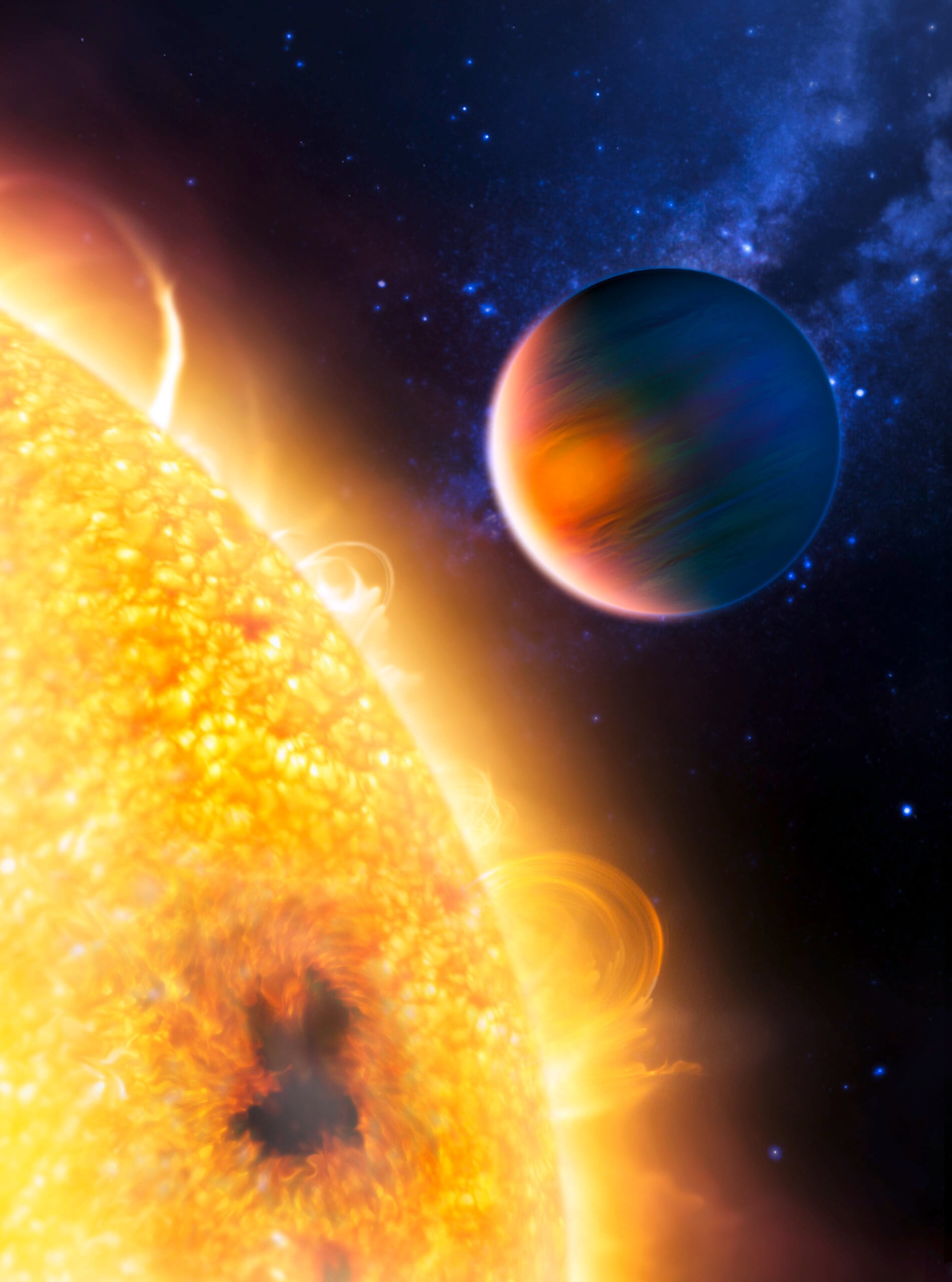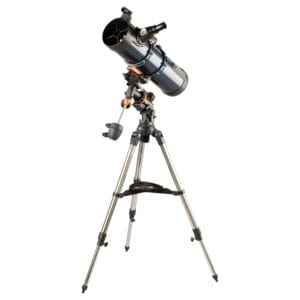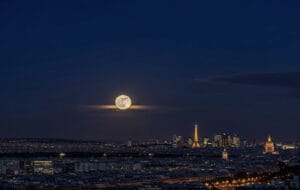Imagine a planet that at first glance appears enchanting, with a beautiful blue glow, almost as if you’re looking at a second Earth. But this blue-colored exoplanet, HD 189733 b, is anything but a peaceful, ocean-like world. In reality, it’s a planet that defies everything we know about weather systems.
Welcome to HD 189733 B: another World
HD 189733 b is located in the constellation Vulpecula, approximately 64 light-years away from us. In cosmic terms, that’s relatively close. At first glance, this planet somewhat resembles Jupiter, but its blue color quickly confuses you. That color doesn’t come from water, as we might expect on Earth. On HD 189733 b, the atmosphere has very different properties.
Contrary to what you might think, the blue on HD 189733 b is the result of something you’d probably never expect: there’s a constant “storm” of glass-like particles that scatter sunlight and give the planet its blue tint. So that calming blue color? It’s actually the result of one of the deadliest weather systems you can imagine.
Glass Rain at 8,700 Kilometers per Hour
The most bizarre aspect of HD 189733 b is undoubtedly its weather. Imagine if it could rain at speeds of thousands of kilometers per hour here on Earth. It sounds absurd, but on HD 189733 b, this happens every day. Here, it rains molten glass. Due to the extreme heat in the atmosphere, which can exceed 1,000 degrees Celsius, silicon particles are heated and vaporize. When this silicon vapor cools slightly, the particles condense back into glass-like droplets that fall back toward the planet.
But because the winds on HD 189733 b rage at speeds of up to 8,700 kilometers per hour, these glass particles don’t fall straight down like rain does here. No, this “rain” is blown horizontally, like a dangerous storm of sharp, glass particles that would destroy everything in its path. This combination of wind and glass rain makes HD 189733 b uninhabitable and extremely dangerous – a literally murderous storm.
The Intense Proximity to its Star
HD 189733 b orbits incredibly close to its star, much closer than Mercury orbits the Sun. While Earth needs a year to orbit the Sun, HD 189733 b does it in just 2.2 days. Due to this proximity, the planet is constantly bombarded by radiation and heat from its star, which has major consequences for its atmosphere and weather patterns. The powerful radiation literally causes the planet’s atmosphere to evaporate; HD 189733 b constantly loses layers of its atmosphere to space.
This intense sunlight also creates extreme temperature differences between the side facing the star and the side in shadow. These temperature differences are partly responsible for the fierce winds on the planet – the weather tries to balance the heat differences but never fully succeeds.
Why is HD 189733 B Interesting to Scientists?
HD 189733 b is more than just a curiosity; it’s a valuable source of knowledge about the extremes of our universe. By studying planets like this, scientists learn how planets and atmospheres function in conditions that are totally different from Earth’s. The glass rain and extreme temperatures of HD 189733 b show us how diverse and surprising planets can be, even compared to the giant planets in our own solar system.
Moreover, HD 189733 b provides us insight into how atmospheres can change and disappear under the influence of extreme radiation. This also helps astronomers understand how planets with atmospheres, like our own Earth, develop and what’s needed to keep that atmosphere stable.
What Does the Future Hold for HD 189733 B?
Although it’s a fascinating world for us to study, HD 189733 b likely has a grim future. Because it’s located so close to its star, its atmosphere will continue to evaporate. It’s a slow process, but eventually, the planet could lose its entire atmosphere and become a bare, dead world. This is a natural process that can take billions of years, but it’s a fascinating lesson for us about the long-term effects of radiation and intense sunlight on a planet.
What Can We Learn from HD 189733 B?
HD 189733 b shows that the diversity of planets is endless and that nature goes far beyond our imagination. Where our Earth has gentle rain showers, HD 189733 b has storms of glass and fierce, hyper-powerful winds. By studying this planet, we’re reminded that the universe is full of worlds that challenge the laws of nature and continue to stimulate our imagination.
In this new blog series about planets you won’t believe exist, we’ll explore many more of these bizarre worlds. HD 189733 b is just the beginning – a first glimpse of how strange and enriching the cosmos can be. Keep following us to discover more of these incredible worlds.








